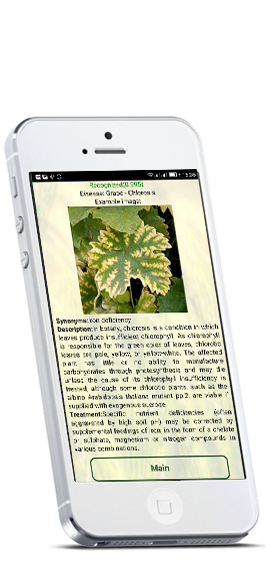-
Plant disease detection
Facilitates the detection and preventing diseases of agricultural plants by both deep learning and programming services


The aim of our research is to facilitate the detection and preventing diseases of agricultural plants by both deep learning and programming services. The idea is to develop multifunctional platform that will use modern organization and deep learning technologies to provide new level of service to farmer’s community.
We are working to expand our image data base and improve our neural networks. We are always happy to volunteer for various issues. For example, collection of images for existing or new diseases and cultures. Checking and correcting descriptions and recommendations for treatment. Search for errors and inaccuracies on the site and in the application. If you have a desire to help us - write to auzhinskiy@jinr.ru or to the Telegram @DoctorPl
We are ready to cooperate with third-party groups and organizations. We can provide APIs to our models, provide consulting services, train the model on your data, and prepare the environment to run it on your resources. Write to the auzhinskiy@jinr.ru for details.
Availible at Google Play. Name - DoctorP





Attention! To achieve best result load the file in jpg format with significant part of a plant. It is possible to look at examples of images in image database
Currently we have custom models for: apples, barberry, cherry, corn, cotton, wheat, cucumbers, currant, grape, orchid, strawberry, tomatoes.
Here ere an example of some crops:
The list of diseases and crops are extended. For a full list - contact with developers.
Here are an examples of the detected diseases:
We have a special model for diseases without a connection to crops:
...
Chief Researcher
...
Research Scientist
...
Lead programmer
...
Lead programmer
...
Research Scientist
...
Our work in numbers
>18
>100
>4000
>40000
* Uzhinskiy A., Ososkov G., Goncharov P., Nechaevskiy A., Smetanin A., Oneshot learning with triplet loss for vegetation classification tasks. Computer Optics 2021; 45(4): 608-614. DOI: 10.18287/2412-6179-CO-856.
* A. Uzhinskiy, G. Ososkov, P. Goncharov, A. Nechaevskiy, Multifunctional platform and mobile application for plant disease detection // Proceedings of the 27th Symposium on Nuclear Electronics and Computing, CEUR Workshop Proceedings 2507, p. 110-114, 2019 http://ceur-ws.org/Vol-2507/110-114-paper-18.pdf
* Pavel Goncharov, Alexander Uzhinskiy, Gennady Ososkov, Andrey Nechaevskiy and Julia Zudikhina. Deep Siamese Networks for Plant Disease Detection // EPJ Web of Conferences. — EDP Sciences, 2020. — Vol. 226. — P. 03010. https://www.epj-conferences.org/articles/epjconf/pdf/2020/02/epjconf_mmcp2019_03010.pdf